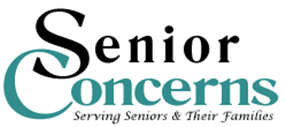Q: My father, a widower, lives some distance away and I am considering having him live with us but have heard negative comments about such arrangements. Do you have any suggestions on how to make it work?
A: I too have heard negative comments about sharing a home with a parent, however, I have also heard of situations where it worked out very well. No two situations are alike but some advance planning can certainly ease the way.
Open communication is probably the most important factor for success. First you and your spouse, if you are married, must discuss the idea and face the changes that will take place in your lives. A dual commitment will go far in resolving problems. If there are children still living at home they should also be brought into these discussions as there will be some impact on their lifestyle.
It is also important that your father be part of the decision making process. He will be giving up a lot of his independence and needs to feel that his moving in will not create a burden on your lifestyle.
Of course physical logistics will need to be worked out. The ideal plan would provide your father with a room and bath of his own. A separate telephone line or cellphone and television set would contribute to everyone’s privacy. If private quarters are not feasible, then some guidelines for this sharing must provide for necessary privacy and space.
Most elders need and want to feel that they belong. By allowing your father to take on some responsibilities he will feel he is contributing to the family unit. A family meeting is a great way of establishing rules, responsibilities and tasks including financial arrangements, if applicable. It would be best if these rules, responsibilities and tasks were reduced to writing so that everyone knew what was expected — thus there being less chance of hurt feelings or misunderstanding of the arrangements.
Attitude can make or break a situation. If the arrangement is seen as a burden — it will likely become one. However, if it is considered an opportunity you’ll have more success.
Keep a sense of humor and good luck!
Q: I can’t understand why they make senior health care coverage so difficult to understand. Plans refer to deductibles, coinsurance, co-payments and share-of-cost. Are these terms interchangeable?
A: The insurance industry like all other businesses has a unique vocabulary to describe its services. The government plans that cover senior health care are no different.
While the terms you mention do sound alike there are subtle differences and the terms are used in conjunction with different types of health care coverage.
A deductible is the initial specific amount of money the insured person is required to pay toward health care expenses before the insurance company will start to cover the cost. You’ll find this term is used by Medicare in Part A (hospital coverage), which has a deductible of $1,216, in 2014, for each benefit period. Part B (medical coverage) has an annual deductible, in 2014, of $147 before Medicare covers the costs and Medicare Part D (prescription coverage) plans have variable deductibles of zero to $310, in 2014, depending on the plan selected.
Coinsurance is the percentage of the cost of care the insured is required to pay after the health care plan has paid. Medicare Part B’s coinsurance is usually 20 percent of the Medicare approved amount. Many employers’ plans also use the 80/20 coinsurance ratio with the insurance paying 80 percent of the cost and the patient being responsible for the remaining 20 percent.
A copayment is a fixed amount the insured is required to pay for each medical service received such as a doctor’s visit, a hospital stay or prescription purchase. Co-payments are usually found in managed care coverage such as HMO and PPO plans. They can range from $10 to $200 per service.
The term share-of-cost is associated with the MediCal program. It is actually another way of describing a deductible. The amount of share-of-cost, however, is not a fixed amount but varies depending on the income of the insured.
HAPPENINGS
Sunday: 1 p.m. History Comes Alive — “Eleanor, Lucy and the Man in the Middle — A perspective on FDR” — at Goebel Adult Community Center, 1385 E. Janss Road in Thousand Oaks — presentation by Martha Abbey Miller who gives a unique look at historical figures. Tickets are $5 and available at the center.





Leave A Comment